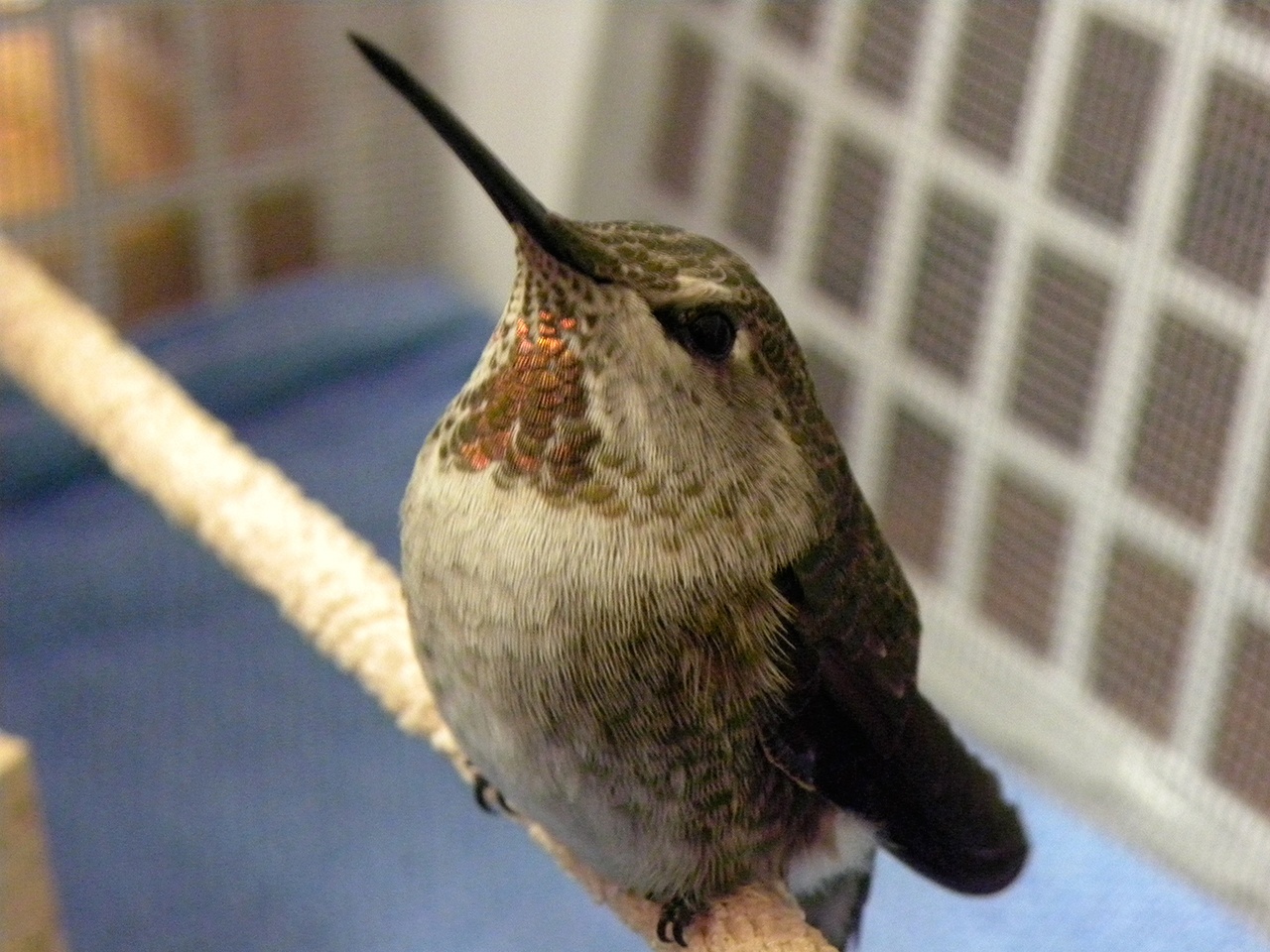Submitted by Wolf Hollow
It seems strange to be talking about hummingbirds in December, but a number of Anna’s Hummingbirds spend the winter on the San Juans and can find it difficult to keep their tiny bodies going when we get freezing temperatures. Some of the most common calls we receive at Wolf Hollow during a cold snap are from people who are concerned about hummingbirds they have found sitting inactive at their feeders, and they’re wondering what they can do to help the little birds.
Suggestions
If you notice a hummingbird in the evening, sitting still, with its feathers puffed and its eyes closed, on the ground or on a feeder, bring it into a sheltered area for the night. Make tiny air holes in a small cardboard box and line the bottom with bathroom tissue. Gently place the little bird in the box and leave it somewhere dark, quiet and cool (like a garage), overnight. First thing in the morning, take it back outside, open the box and leave it for a few minutes to give the bird a chance to fly away.
If you find a hummingbird in a similar condition during the day, place it in a prepared box and bring it into a quiet, slightly warm place. Check on it in ~ 15-20 minutes, and if it is alert and active take the box outside and let the bird go. In either case, if the hummingbird doesn’t fly off within a few minutes after the box is opened, call Wolf Hollow as it may need additional care.
While they need lots of energy at this time of year, please keep the sugar/water ratio at 1:4. Higher concentrations can be harder for them to drink and process. Taking your feeder in at night, or in really cold daytime temperatures, rotating between two feeders, one outside and one kept inside the house, can keep the fluid from freezing.
Other small animals that we get calls about in the winter months are bats. Bats in our area may be active during periods of mild weather during the winter, but in cold weather, they often find safe, sheltered nooks and crannies to hide in and go into semi-hibernation. This could be in a tree cavity, a small cave or in our sheds and wood piles.
If you find a bat in your wood pile, what should you do?
The best thing to do is to leave it undisturbed. It has found a suitable place to hunker down during the cold weather and disturbing the bat or exposing it to the elements might kill it. If its surroundings have already been disturbed or it’s not possible to leave it in place, carefully move the bat (wearing gardening gloves), as short a distance as possible to a similar protected spot in the shed, between logs or behind boards, where it won’t be disturbed. Please don’t bring it inside to warm it up, because wakening it from torpor will use up precious calories that the bat needs to survive through until spring.
If you do find a bat, Wolf Hollow would love to know. They are working with Kwiaht to gather information about where bats are spending the winter.
If you have questions regarding a wild animal you think might need help, call Wolf Hollow staff at 378-5000.



